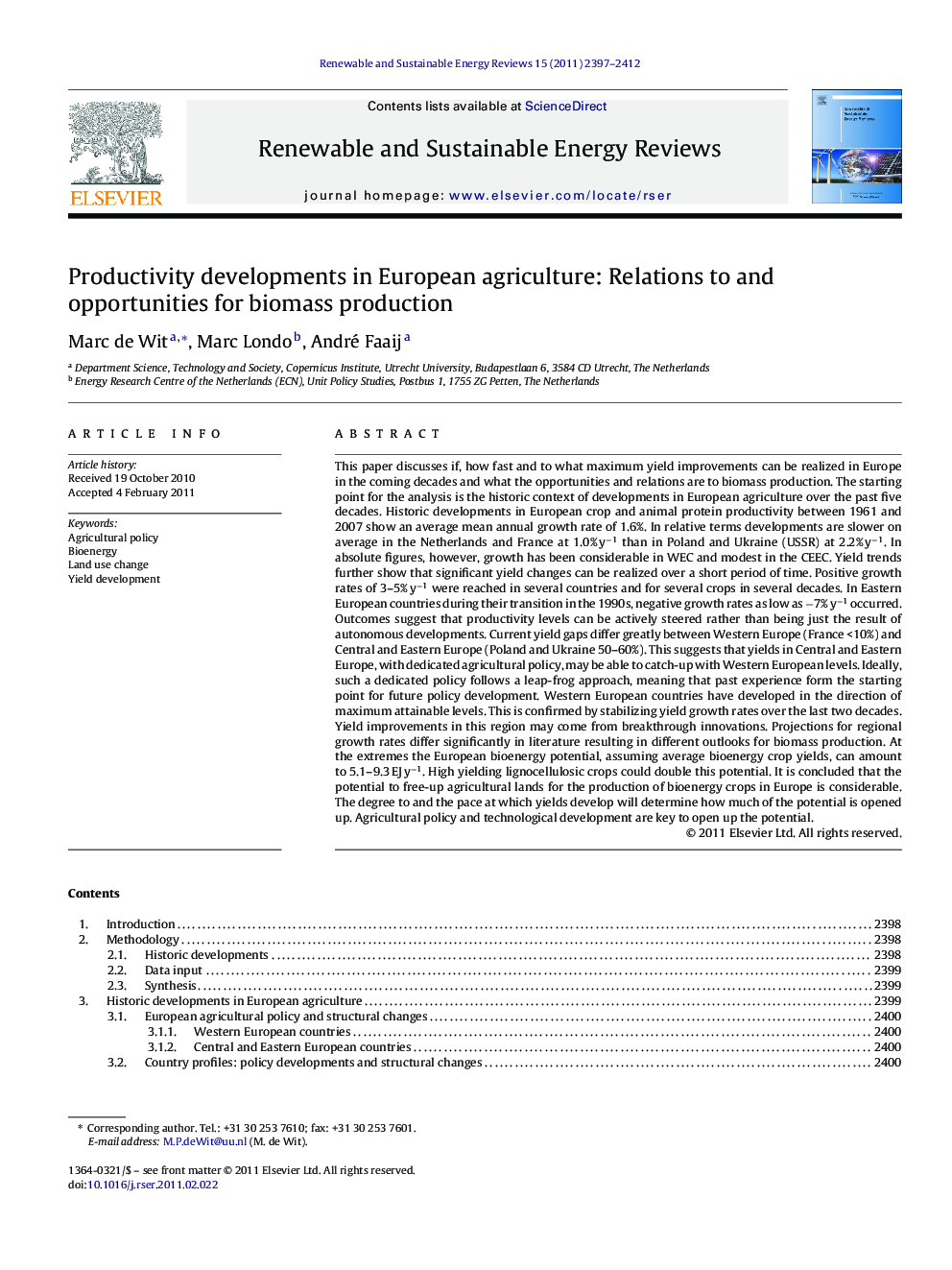| Article ID | Journal | Published Year | Pages | File Type |
|---|---|---|---|---|
| 1751210 | Renewable and Sustainable Energy Reviews | 2011 | 16 Pages |
This paper discusses if, how fast and to what maximum yield improvements can be realized in Europe in the coming decades and what the opportunities and relations are to biomass production. The starting point for the analysis is the historic context of developments in European agriculture over the past five decades. Historic developments in European crop and animal protein productivity between 1961 and 2007 show an average mean annual growth rate of 1.6%. In relative terms developments are slower on average in the Netherlands and France at 1.0% y−1 than in Poland and Ukraine (USSR) at 2.2% y−1. In absolute figures, however, growth has been considerable in WEC and modest in the CEEC. Yield trends further show that significant yield changes can be realized over a short period of time. Positive growth rates of 3–5% y−1 were reached in several countries and for several crops in several decades. In Eastern European countries during their transition in the 1990s, negative growth rates as low as −7% y−1 occurred. Outcomes suggest that productivity levels can be actively steered rather than being just the result of autonomous developments. Current yield gaps differ greatly between Western Europe (France <10%) and Central and Eastern Europe (Poland and Ukraine 50–60%). This suggests that yields in Central and Eastern Europe, with dedicated agricultural policy, may be able to catch-up with Western European levels. Ideally, such a dedicated policy follows a leap-frog approach, meaning that past experience form the starting point for future policy development. Western European countries have developed in the direction of maximum attainable levels. This is confirmed by stabilizing yield growth rates over the last two decades. Yield improvements in this region may come from breakthrough innovations. Projections for regional growth rates differ significantly in literature resulting in different outlooks for biomass production. At the extremes the European bioenergy potential, assuming average bioenergy crop yields, can amount to 5.1–9.3 EJ y−1. High yielding lignocellulosic crops could double this potential. It is concluded that the potential to free-up agricultural lands for the production of bioenergy crops in Europe is considerable. The degree to and the pace at which yields develop will determine how much of the potential is opened up. Agricultural policy and technological development are key to open up the potential.
